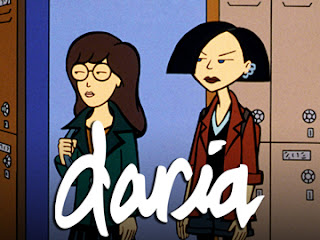Directed by
Billy Wilder
Written by
Billy Wilder and Raymond Chandler
Based on
the novel by James M. Cain
Double
Indemnity is one of those movies that, even if people haven’t seen it, they probably
know the name as one of the film noir classics.
But this is not noir with trenchcoated detectives and a murder to solve. This is about two people committing a murder.
Walter Neff (Fred MacMurray) is an average insurance
salesman until Phyllis Dietrichson (Barbara Stanwyck, in an Academy
Award-nominated performance) asks him if it’s possible to take out accident
insurance on her husband (Tom Powers) without him knowing. Walter is repulsed by the idea at first, but
then enters into an affair with Phyllis and they work out the perfect plan to
get away with murder.
Part
of what makes this movie so interesting is that the two characters are pure
villains. There’s an explanation that
Mr. Dietrichson abuses her, but ultimately, they are in it for the money, and
they are willing to do what it takes to get it, such as setting up the murder
on a train to get the double indemnity clause, which pays double for unusual
accidents. It provides a perfect reason
as to why they have to pull off the murder the way they do, and also shows that
Walter is truly the one enjoying being the villain. We watch as he plots and schemes to get
around what he knows his friend/insurance investigator Barton Keyes (Edward G.
Robinson, who probably should have been nominated) is going to do. And as they pull off the murder, the audience
is thrilled. It’s one of those interesting
cases. In any other film, Keyes would be
the hero for Walter’s villain. Instead,
the audience gets attached to both of them succeeding. We want to see Walter and Phyllis get away
with murder in the first half, but after the murder, we also want to see them
get caught.
The
movie also plays up its film noir to an extreme, but instead of coming off as
cheesy, it works. Walter has an
omnipresent narration throughout, which not only helps us figure out more of
Walter’s personality and planning, but is actually justified by the fact that
he is recording it for Keyes to find.
The suspense of Keyes’ investigation in the second half is also well
done. In particular, one iconic scene
has Phyllis hiding in the hallway behind Walter’s door as Keyes leaves Walter’s
apartment. Doors don’t swing out into
hallways, but the scene it creates is such a perfect piece of suspense that facts
can be ignored. There are few films that
can get away with something like that, and this one of them. And the double crosses near the end twist the
film’s plot right when you think you know the whole story, leading to a surprisingly
tender final scene.
Double
Indemnity is top notch film noir, with interesting characters and a plot that
gets the audience attached to what’s going on.







